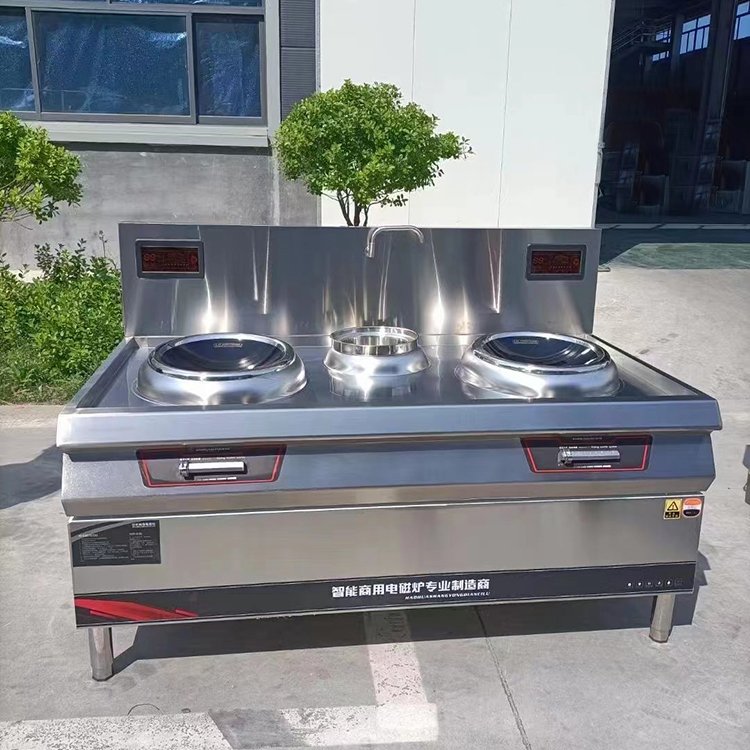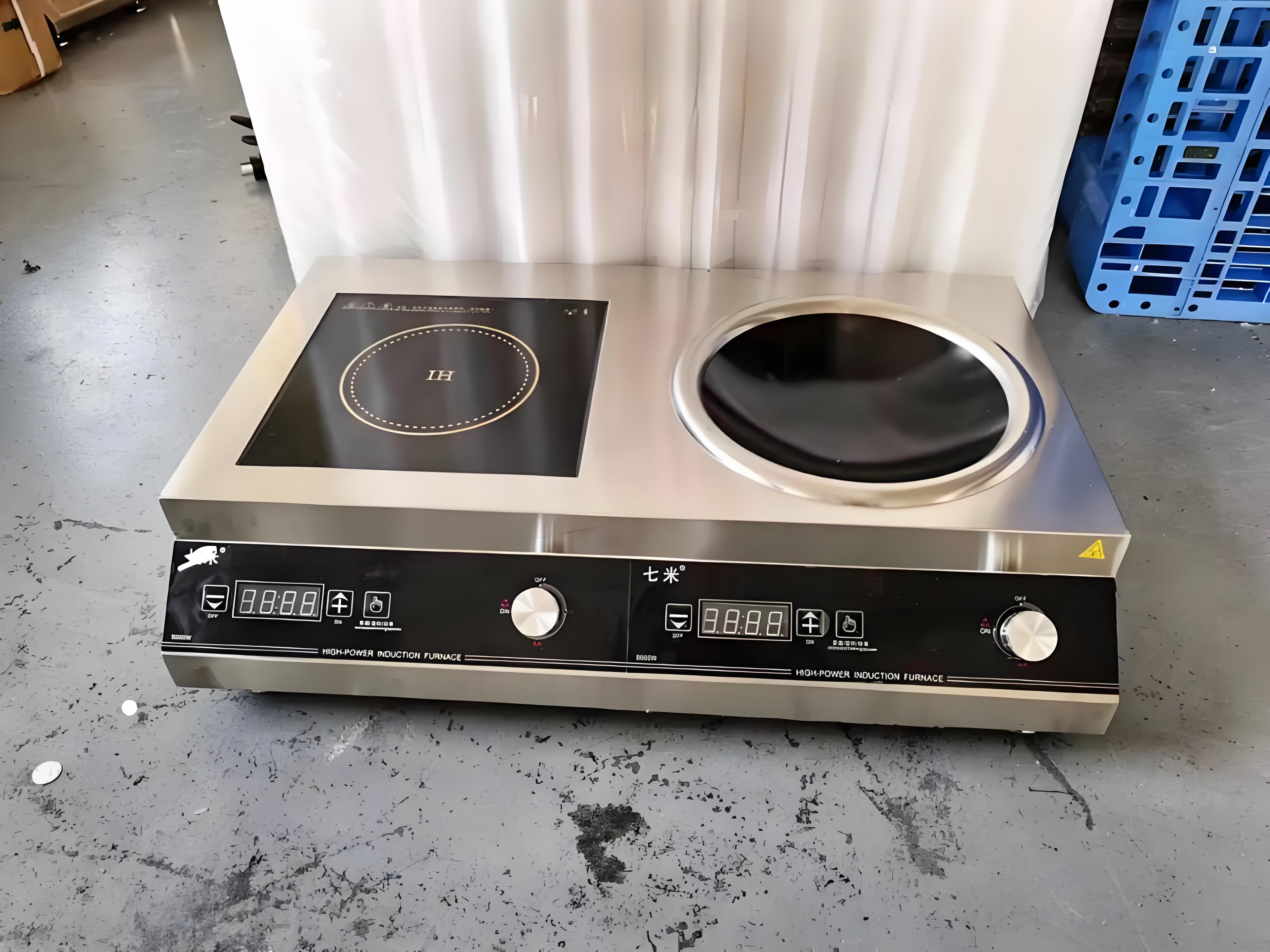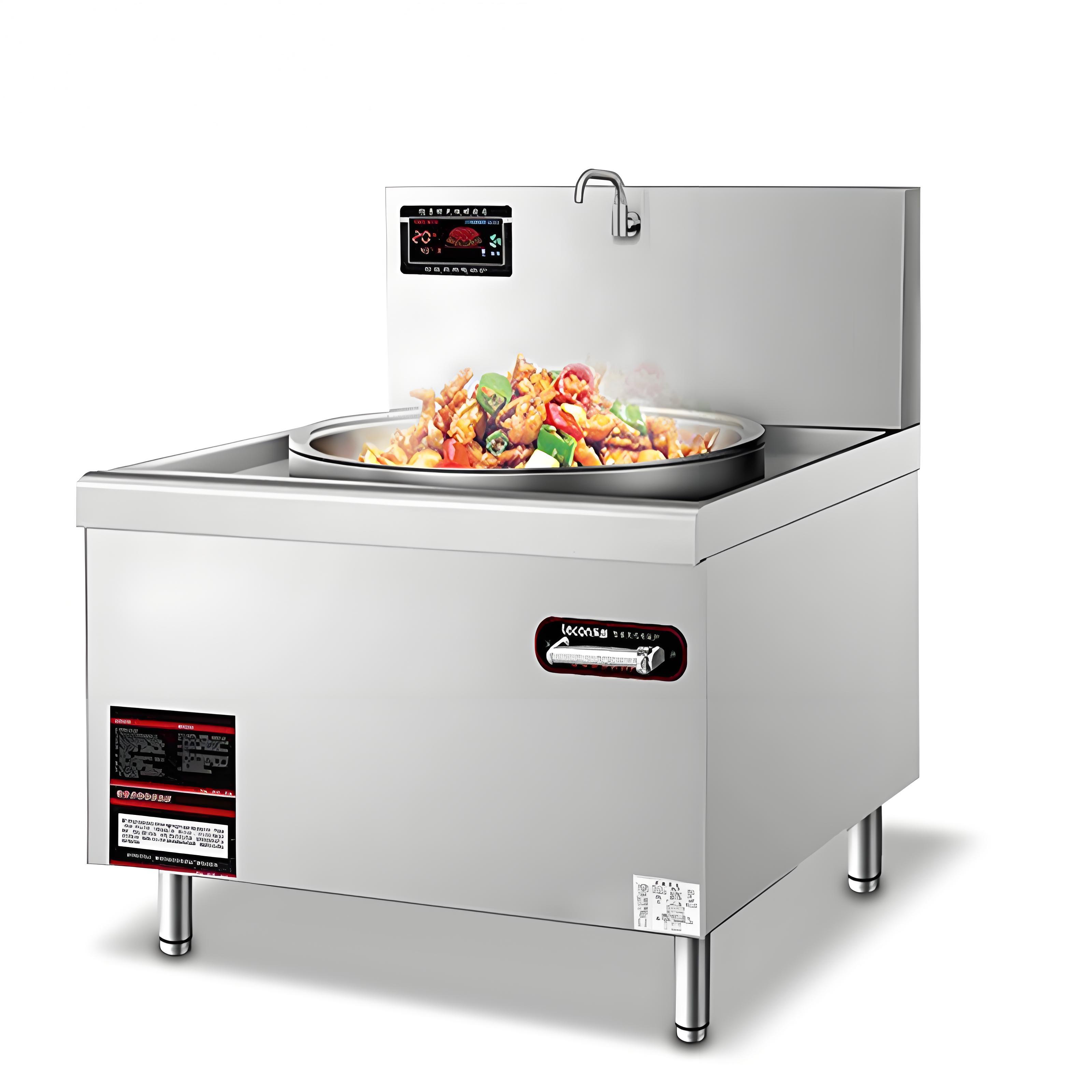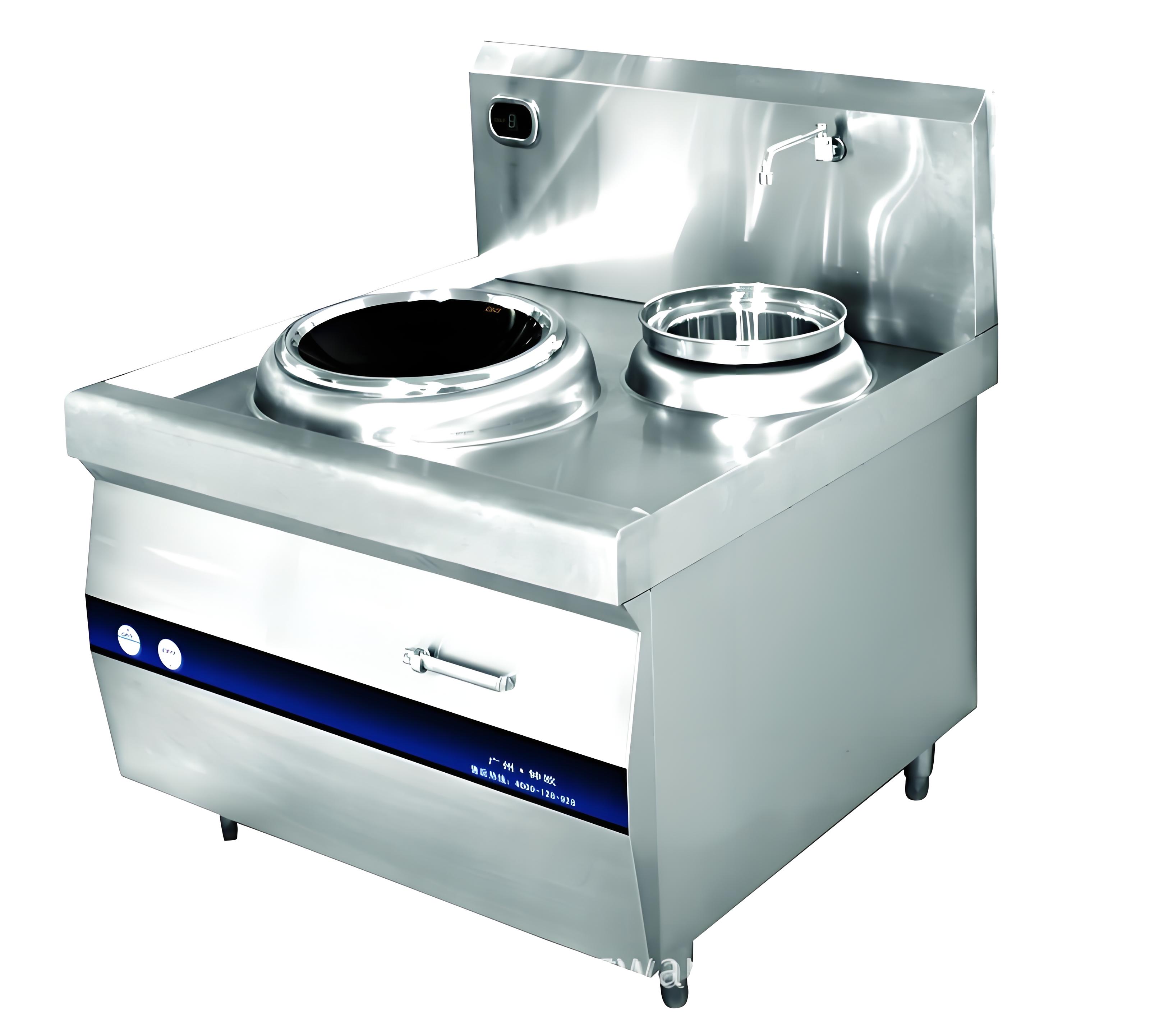As someone who’s spent years outfitting kitchens for small restaurants and catering gigs, I’ve come to appreciate the game-changing efficiency of commercial induction cooktops. They’re fast, energy-efficient, and safer than gas stoves, but one feature that can make or break their usability is the control panel. When I was setting up my first pop-up kitchen, I was overwhelmed by the variety of control panels out there—each with its own quirks and benefits. The question I hear often from fellow chefs and business owners is: “What types of control panels are available for commercial induction cooktops?” Drawing from my hands-on experience and research into the latest models in 2025, I’ll break down the main types of control panels, their pros and cons, and how to choose the right one for your kitchen’s needs.

Why the Control Panel Matters
In a busy commercial kitchen, where every second counts, the control panel is your command center. It determines how easily you can adjust heat, set timers, or program cooking modes while juggling orders. A poorly designed panel can slow you down, frustrate your staff, and even lead to costly mistakes. On the flip side, a well-designed panel can streamline operations and make cooking feel intuitive. Whether you’re running a food truck, a café, or a high-volume restaurant, understanding the types of control panels available for commercial induction cooktops is key to picking the right equipment.
I learned this the hard way during my first catering event. My cooktop had a clunky dial-based panel that was hard to read under dim lighting, and adjusting temperatures felt like guesswork. After that, I vowed to prioritize user-friendly controls. Let’s dive into the main types of control panels you’ll encounter and what they offer.
Types of Control Panels for Commercial Induction Cooktops
Commercial induction cooktops come with a range of control panel designs, each suited to different kitchen setups and user preferences. Here are the five main types I’ve worked with or researched extensively:
Touchscreen Control Panels
Touchscreen panels are the modern darlings of commercial kitchens. These sleek, digital interfaces use capacitive touch technology, letting you tap or swipe to adjust settings like temperature, power levels, or timers. Many models, like those from Vollrath or True Induction, feature full-color displays with intuitive menus, often showing real-time feedback like wattage or cooking time.
Pros: Fast, precise, and easy to clean (no knobs to trap grease). They often support advanced features like programmable presets for recipes or multi-zone control for cooktops with multiple burners. I love how touchscreen panels feel high-tech and make precise adjustments a breeze, especially in fast-paced environments.
Cons: They can be pricey, and staff may need training to navigate complex menus. Touchscreens can also glitch if wet or greasy hands are involved, which is common in busy kitchens. I once had a touchscreen freeze mid-service because of a spilled sauce—frustrating, to say the least.

Push-Button Control Panels
Push-button panels use physical or digital buttons to control settings. These are common on mid-range models like the Avantco IC series. Each button corresponds to a specific function, like power on/off, temperature up/down, or preset modes (e.g., boil, simmer).
Pros: Simple and reliable, with tactile feedback that’s great for high-pressure settings. They’re less prone to malfunction from wet hands compared to touchscreens. I’ve found push-button panels ideal for small kitchens where staff turnover is high, as they’re easy to learn.
Cons: Limited customization compared to touchscreens, and buttons can wear out over time. Cleaning around physical buttons can also be a hassle if grease builds up.
Knob/Dial Control Panels
Knob or dial panels feature rotary dials or knobs to adjust power or temperature. You’ll see these on budget-friendly or older models, like some from Winco. Each knob typically controls one burner, with markings for power levels or temperature ranges.
Pros: Intuitive and durable, with no learning curve. Knobs are great for chefs who prefer analog control and don’t need fancy features. I used a knob-based cooktop in my food truck, and it held up through years of rough handling.
Cons: Less precise than digital controls, and knobs can be hard to read in low light. They’re also prone to grease buildup, which requires regular cleaning.
Slider Control Panels
Slider panels combine touch technology with a linear interface, where you slide your finger along a track to adjust settings. Brands like Hatco and Waring offer models with sliders for precise power control.
Pros: Sliders offer a balance of precision and simplicity, making them great for fine-tuning heat levels. They’re easier to clean than knobs and more intuitive than some touchscreens. I’ve used sliders in catering setups where I needed quick, precise adjustments for delicate sauces.
Cons: Like touchscreens, they can be sensitive to moisture or grease. They also tend to be found on higher-end models, so cost can be a factor.

Hybrid Control Panels
Hybrid panels blend multiple control types, such as touchscreens with physical buttons or sliders with knobs. For example, some high-end Vollrath models pair a touchscreen for programming with buttons for quick access to presets.
Pros: Versatile, offering the best of both worlds—digital precision and tactile reliability. They’re ideal for kitchens with diverse needs, like restaurants that switch between high-volume and precision cooking. I’ve seen hybrid panels shine in upscale kitchens where chefs want flexibility.
Cons: They’re often the most expensive and can be complex for new users. Maintenance can also be trickier due to the mix of components.
Comparison of Control Panel Types
To help you choose, here’s a table comparing the main control panel types based on key factors:
| Control Panel Type | Ease of Use | Best For | Key Features | Drawbacks |
|---|---|---|---|---|
| Touchscreen | Medium to High | High-tech kitchens, precise cooking | Programmable presets, digital display | Sensitive to moisture, higher cost |
| Push-Button | High | Small kitchens, high staff turnover | Simple, reliable, tactile feedback | Limited customization, cleaning |
| Knob/Dial | High | Budget kitchens, analog preference | Durable, intuitive, low cost | Less precise, grease buildup |
| Slider | Medium to High | Precision cooking, modern setups | Precise control, easy to clean | Moisture sensitivity, cost |
| Hybrid | Medium | Versatile kitchens, upscale venues | Combines digital and tactile controls | Expensive, complex for beginners |
This table highlights that push-button and knob/dial panels are best for simplicity and budget, while touchscreen and slider panels suit precision-driven or high-tech kitchens. Hybrid panels are great for flexibility but come with a higher price tag.
My Experience with Induction Cooktop Control Panels
When I started my catering business, I bought a budget-friendly induction cooktop with a knob-based panel. It was simple enough for my team to use without much training, but the lack of precision frustrated me when I needed exact temperatures for sauces or tempering chocolate. After upgrading to a touchscreen model (a Vollrath Mirage Pro), I was blown away by the ability to program recipes and set precise power levels. However, during a hectic outdoor event, a splash of broth made the touchscreen glitch, forcing me to switch to a backup unit. That taught me to always have a plan B and to prioritize models with moisture-resistant controls.
For my current restaurant setup, I use a hybrid panel cooktop that combines a touchscreen for programming with physical buttons for quick adjustments. It’s been a game-changer for my team, who can switch between high-volume frying and delicate simmering without missing a beat. The learning curve was steep for some staff, but once they got the hang of it, the efficiency gains were worth it.

How to Choose the Right Control Panel for Your Kitchen
Picking the right control panel depends on your kitchen’s needs, budget, and staff skill level. Here’s what I consider:
Kitchen Volume and Pace
For high-volume kitchens (e.g., fast-casual restaurants), push-button or knob/dial panels are ideal for their simplicity and speed. For upscale venues or catering where precision matters, touchscreen or slider panels offer fine-tuned control.
Staff Training
If your team has high turnover or limited tech skills, stick with push-button or knob/dial panels—they’re intuitive and require minimal training. For tech-savvy staff, touchscreen or hybrid panels unlock advanced features.
Budget
Knob/dial and push-button panels are typically found on budget-friendly models (under $1,000). Touchscreen, slider, and hybrid panels are pricier, often $1,500-$3,000 for commercial-grade units. I always weigh the cost against long-term durability and features.
Cooking Style
If your menu involves precise techniques (e.g., sous-vide or tempering), touchscreen or slider panels are worth the investment for their accuracy. For general cooking like boiling or frying, simpler panels suffice.
Durability and Maintenance
Look for panels with sealed surfaces or moisture-resistant coatings to handle spills. Touchscreens and sliders are easier to clean but more sensitive to liquids, while knobs and buttons can trap grease if not sealed properly.

Practical Tips for Using and Maintaining Control Panels
To get the most out of your induction cooktop’s control panel, here’s what I do:
Train Your Staff
Spend time teaching your team how to use the panel, especially for touchscreen or hybrid models. I run quick training sessions with new hires to avoid errors during service.
Keep It Clean
Wipe the panel with a damp cloth and mild detergent after each shift to prevent grease buildup. For touchscreens, use a microfiber cloth to avoid scratches. Avoid soaking wet cloths on digital panels to prevent glitches.
Protect from Spills
In busy kitchens, spills are inevitable. I keep a silicone cover or plastic wrap over touchscreens during hectic services to minimize moisture damage.
Check for Wear
For knob/dial or push-button panels, inspect for loose or sticky controls, which can happen with heavy use. Replace worn parts through the manufacturer to maintain performance.
Use Presets Wisely
For touchscreen or hybrid panels, program presets for common tasks (e.g., boiling water at 100°C or frying at 350°F). It saves time and ensures consistency.

Alternatives to Induction Cooktops
If you’re unsure about induction cooktops or their control panels, here are other cooking options I’ve used:
Gas Cooktops: Offer tactile knob controls but lack induction’s precision and safety features. They’re better for kitchens with existing gas lines.
Electric Radiant Cooktops: Simple controls but slower to heat and less energy-efficient than induction.
Portable Butane Stoves: Budget-friendly with basic knobs, ideal for food trucks but less safe for indoor use.
Commercial Ranges: Combine gas or electric burners with ovens, with varied control types, but they’re bulkier and pricier.
Final Thoughts
What types of control panels are available for commercial induction cooktops? From touchscreen and slider panels for precision-driven kitchens to push-button and knob/dial panels for simplicity and budget, there’s a control type for every setup. My experience has taught me that the right panel depends on your kitchen’s pace, staff skills, and cooking style. A hybrid panel has been my sweet spot for versatility, but a simple push-button model can be just as effective for smaller operations. Choose a panel that matches your needs, train your team, and maintain it well, and your induction cooktop will be a reliable workhorse that keeps your kitchen humming.
Here’s to cooking smarter and faster in your commercial kitchen!

Frequently Asked Questions
Q1: Are touchscreen control panels reliable in busy kitchens?
A: Yes, if they’re from reputable brands with moisture-resistant designs. Train staff to handle them with dry hands and clean regularly to avoid glitches.
Q2: Which control panel is easiest for new staff to learn?
A: Push-button or knob/dial panels are the most intuitive, requiring minimal training compared to touchscreens or hybrids.
Q3: Can I replace a control panel if it’s not working well?
A: Some manufacturers offer replacement panels, but it’s often costly. Contact the brand’s support for compatibility and repair options.
Q4: Do slider panels work well for precise cooking?
A: Yes, slider panels are excellent for fine-tuning temperatures, making them ideal for delicate tasks like sauces or tempering.
Q5: Are knob/dial panels outdated for commercial kitchens?
A: Not at all. Knob/dial panels are durable and user-friendly, perfect for budget-conscious kitchens or chefs who prefer analog controls.





